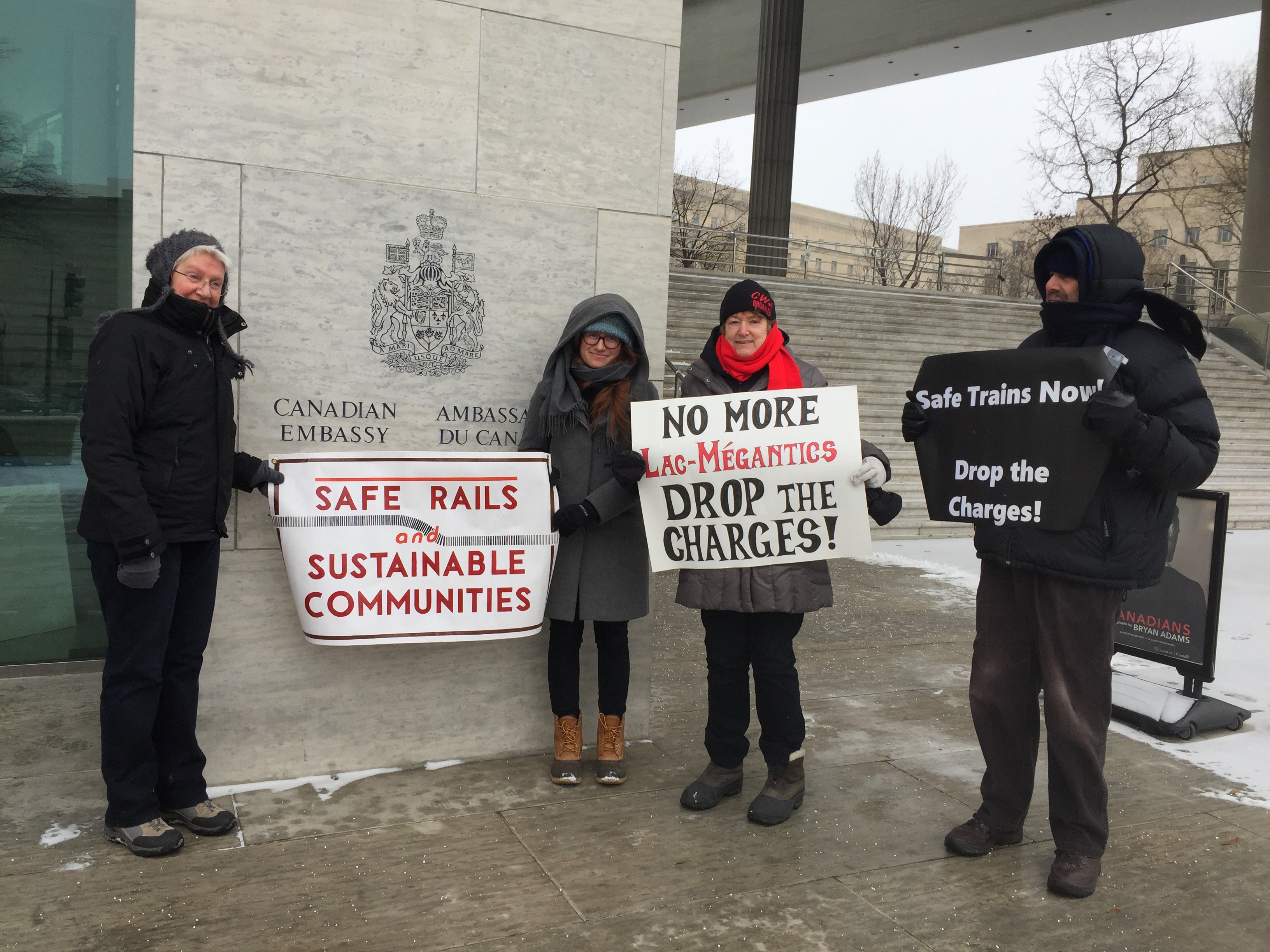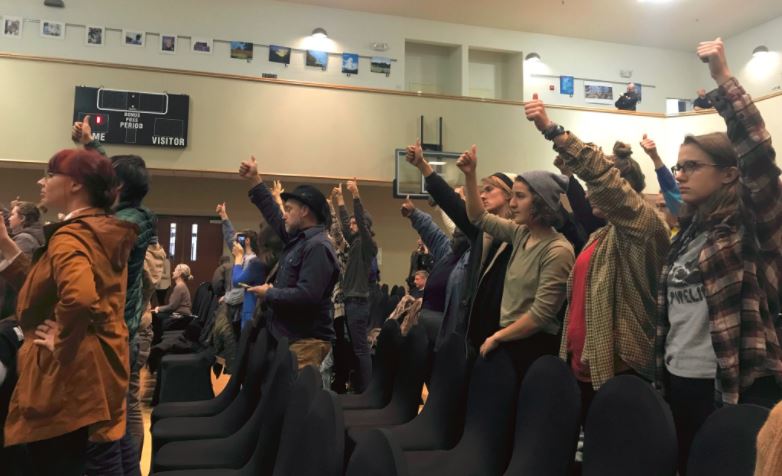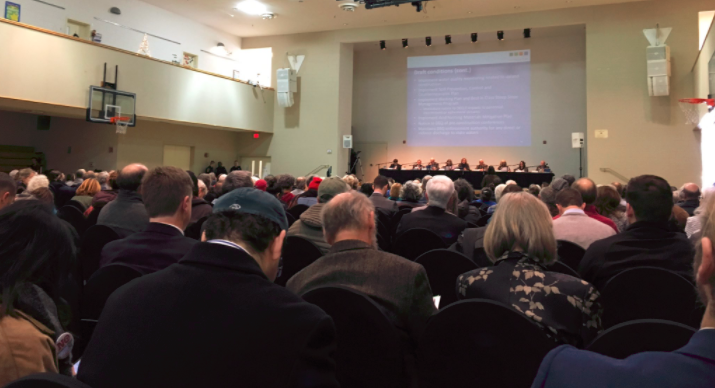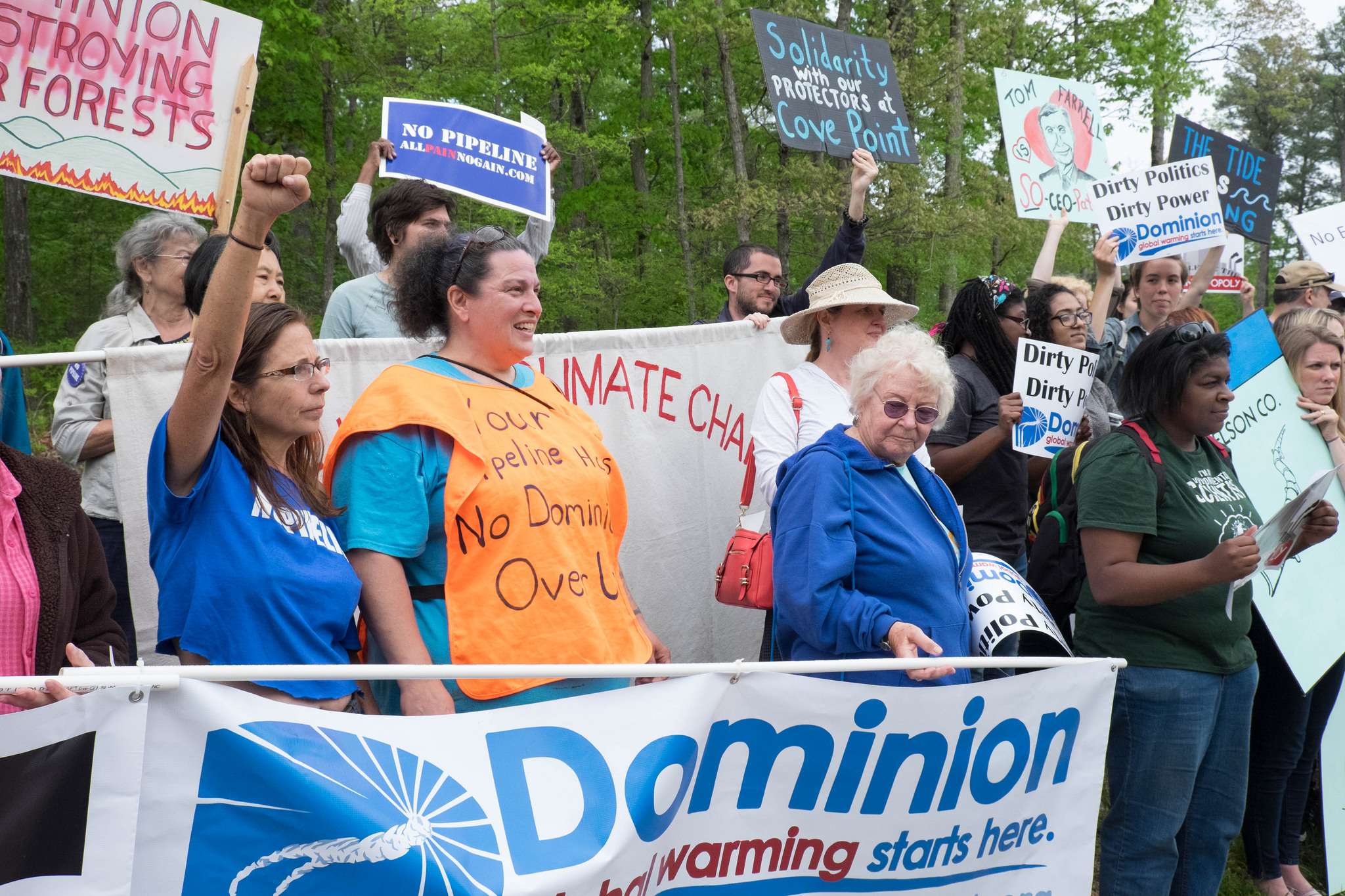We need you to help save the Potomac River.
Governor Hogan is handing over our clean drinking water to the fossil fuel industry. How? A Canadian oil company called TransCanada wants to build a pipeline to carry fracked gas underneath the treasured Potomac, the drinking water source for millions of people. Rather than ensuring that our drinking water be protected, Hogan has basically been TransCanada’s biggest cheerleader.
Read more information about the history behind this fight, and how Hogan is handing the review process to Trump agency officials in this blog post.
Now, we’re running out of time to stop it. The Hogan Administration has until March 15 to issue its decision. So we need to put on the pressure.
That’s where you come in. We need you to speak up and spread the word to stop this pipeline. We need you to show EVERYONE — from Governor Hogan to your next-door neighbor — what the Potomac River means to you
We’re asking you to take part in the #MyPotomac social media campaign. It’s simple: post a picture that showcases what the Potomac River means to you. Let your friends and neighbors know why we need to STOP TransCanada’s Potomac Pipeline.
Add your voice to protect our water, our communities, and our climate.
How to participate? It’s easy!
Step 1. Take or find a picture of the Potomac River.
This can be a picture of you, your family, friends, home, or a photo of you by the Potomac River. If you can, include a sign or message about stopping the Potomac Pipeline. You can make a sign yourself or print out our No Potomac Pipeline signs — anything related to stopping this natural gas pipeline works. If you’re not planning any Potomac trips in the near future, you can find an old favorite!
Here are two optional signs you can print and use to hold: Click here for downloadable posters.
Or share a picture of ours! Click here for an album of downloadable pictures.
Step 2. Tell your story.
Tell your friends what the Potomac River means to you, and explain why you’re fighting to protect it. This can be as short or as long as you like.
Step 3. Tag Maryland Governor Larry Hogan in your post.
The goal of this campaign is to spread the word — and make those in power hear our voices. Right now, that’s Maryland Governor Larry Hogan. Hogan has the power to stop this pipeline. To boost your voice, we encourage you to tag Hogan’s social media handle in your post to make sure he sees your message. On Facebook, Twitter, and Instagram, use the @ symbol to tag him. Write a post that’s convincing and speaks from the heart, tell Gov. Hogan why YOU want to stop this pipeline. If you need some help, see the sample posts below to spark some ideas of your own.
Hogan’s Handles:
- Facebook: @Governor Larry Hogan
- Twitter: @LarryHogan
- Instagram: @change_maryland
Step 4. Tell your friends.
Tag your friends, encourage them to share your post or create a post of their own to spread the word and amplify our message that we do not want or need the Potomac Pipeline, we want to keep fossil fuels in the ground to protect our climate and our communities.
When you’re ready to post:
- Upload your photo to every social media platform you use (Facebook, Twitter, Instagram, etc.)
- In the caption, don’t forget to tag Governor Larry Hogan and please use the hashtag #MyPotomac. Also consider including the optional hashtag #NoPotomacPipeline.
Examples:
Sample Facebook Posts:
- This is #MyPotomac. @Governor Larry Hogan, we need you to save it. That means rejecting fracked-gas pipelines that threaten the beauty and safety of our water. #NoPotomacPipeline
- Here’s why #MyPotomac matters to me: [ADD YOUR PERSONAL STORY.] @Governor Larry Hogan, please protect the Potomac and stop TransCanada’s dirty fracked-gas pipeline. #NoPotomacPipeline
- I’m fighting to save #MyPotomac. @Governor Larry Hogan, Maryland banned fracking. We cannot allow a pipeline carrying fracked gas to pass through our state. Will you keep your fracking promise and reject the Potomac Pipeline? #MyPotomac #NoPotomacPipeline
- With climate change wreaking havoc on our country last year, it’s clear we need to do something. That means keeping fossil fuels in the ground. @Governor Larry Hogan, will you keep your word and reject the Potomac Pipeline? #MyPotomac #NoPotomacPipeline
- Hey @Governor Larry Hogan, don’t be fooled by TransCanada’s false promises of jobs and economic growth from the Potomac Pipeline. We know that this pipeline only benefits one, and that’s TransCanada. Our water is too important to put it in an Oil & Gas company’s hands. Do the right thing and reject the Potomac Pipeline #MyPotomac #NoPotomacPipeline
Sample Twitter Posts:
- The health and safety of #MyPotomac River matters to me. @Governor Larry Hogan, please protect the Potomac and stop TransCanada’s dirty fracked-gas pipeline. #NoPotomacPipeline
- We know pipelines leak and spill. A pipeline has no place underneath the Potomac River. I want to protect #MyPotomac for me and for future generations. @LarryHogan, will you reject the PotomacPipeline? #NoPotomacPipeline
- .@LarryHogan you promised to ban fracking in MD. Why would you then let a fracked gas pipeline run underneath our Potomac River? Please stand up for our clean water. #MyPotomac #NoPotomacPipeline
- Governor @LarryHogan, you banned fracking over potential risks to our land and water. Will you keep your fracking promise and reject the Potomac Pipeline? #MyPotomac #NoPotomacPipeline
- Our water is too important to risk. @LarryHogan, the Potomac Pipeline would threaten the drinking water for millions across MD, DC, & WV. Do the right thing. #MyPotomac #NoPotomacPipeline @CCAN
- The Potomac Pipeline is owned by @TransCanada, which also owns #KeystoneXL & has a long record of disastrous spills. @LarryHogan, you must be a leader and reject the Potomac Pipeline for our safety. #MyPotomac #NoPotomacPipeline @CCAN @PotomacRiver
Sample Instagram Posts:
- This is #MyPotomac River. I love to kayak, fish, and swim. Governor @change_maryland, a pipeline spill from the Potomac Pipeline would change things forever. We know TransCanada’s pipelines leak and spill constantly. Will you deny the 401 certification for the pipeline and protect our water? #NoPotomacPipeline
- I’m fighting to save #MyPotomac from pipelines. This is important to me because I want the river to be enjoyed for me and future generations. Gov. @change_maryland, please protect the Potomac and stop TransCanada’s dirty fracked-gas pipeline. #NoPotomacPipeline
- Gov. @change_maryland, we took a stand to protect MD citizens & environment from fracking. Let’s not nullify this progress with a hazardous fracked gas pipeline under the Potomac! Reject the Potomac Pipeline! #MyPotomac #NoPotomacPipeline
- Hey Governor @change_maryland, the review process for TransCanada’s Potomac Pipeline has been flawed from the start. We need a full environmental review to see the potential impacts this pipeline would have on our state. Do the right thing for our water. #MyPotomac #NoPotomacPipeline
Step 5: Stay updated!
Sign up today to get updates on the “No Potomac Pipeline” campaign, and we’ll contact you with important updates and action items you can take to support this campaign.
Social Media Best Practices & Tips:
- Use a period in front of a Twitter handle, if used at the beginning of the tweet.
- Please tag the Facebook page “No Potomac Pipeline” so we can easily find your post!
- Please include our #MyPotomac hashtag, and the optional #NoPotomacPipeline hashtag!
- In the actual photo, please also consider tagging the organizations of this campaign so we can easily find and share your post (type the @ symbol, then type out the name of the organization and select it from the options to complete the tag):
- For Facebook:
- For Twitter:
- For Instagram:
Other Ways to Get Involved:
Once you’ve posted to social media, here are a few more steps you can take to stand with us against the Potomac Pipeline.
- Submit electronic comments to the Federal Energy Regulatory Commission (FERC) on their Potomac Pipeline environmental assessment (EA). Learn more from our friends at Potomac Riverkeeper here.
- Join us for the huge rally at Governor Hogan’s mansion in Annapolis on February 15. RSVP here.

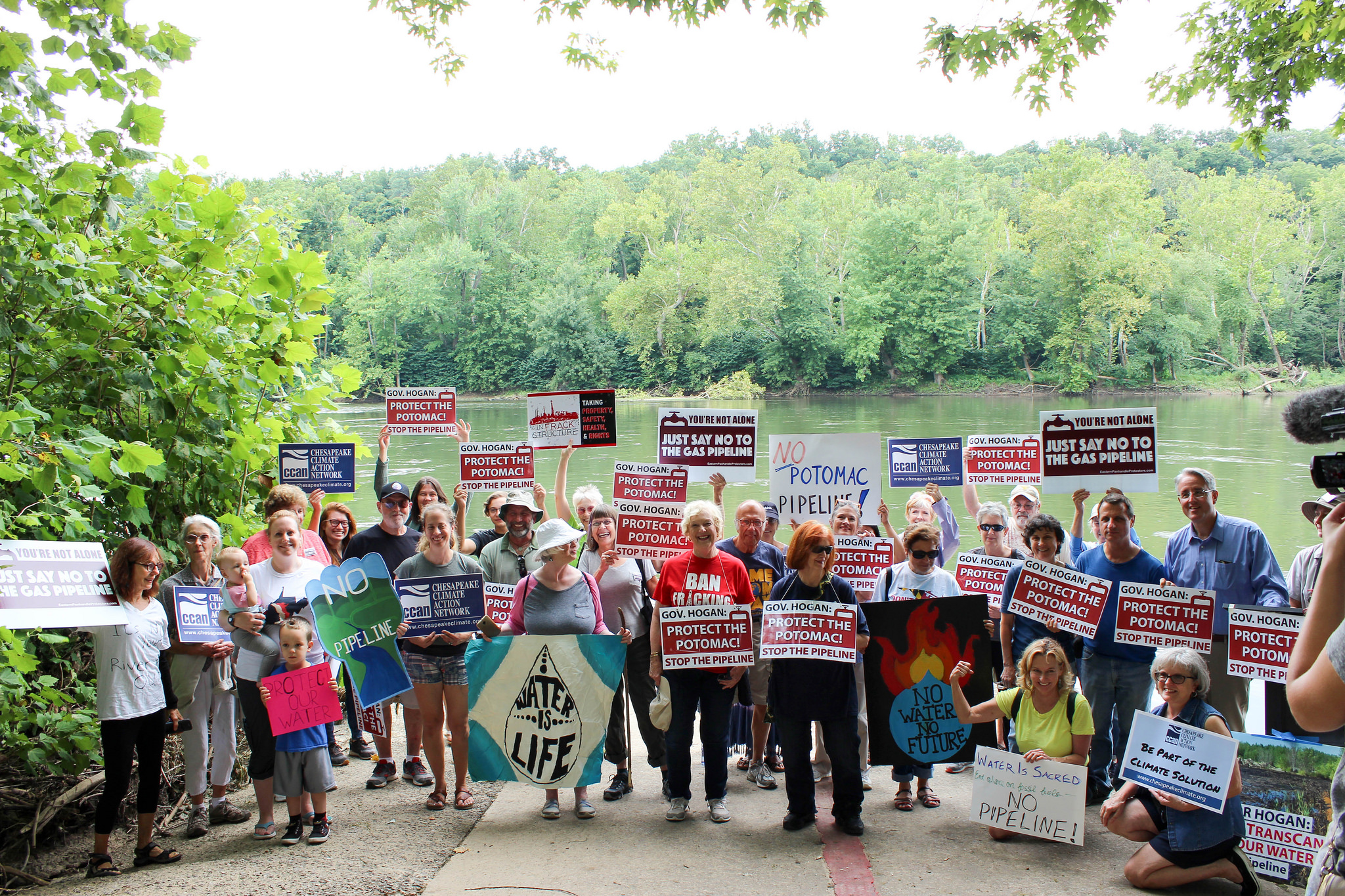
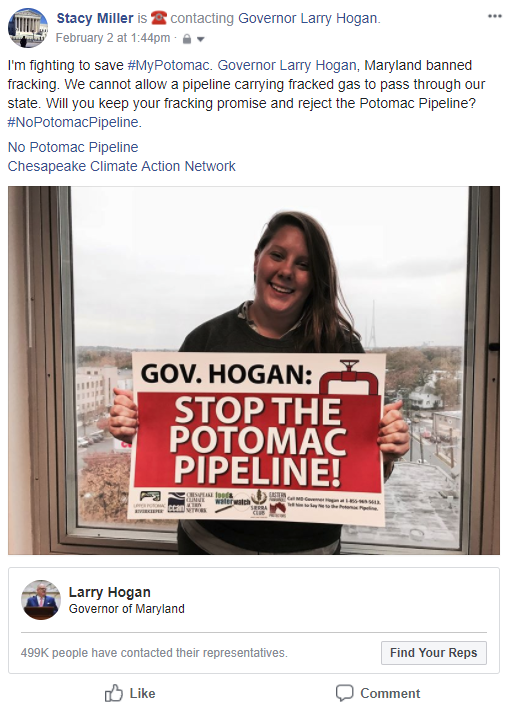


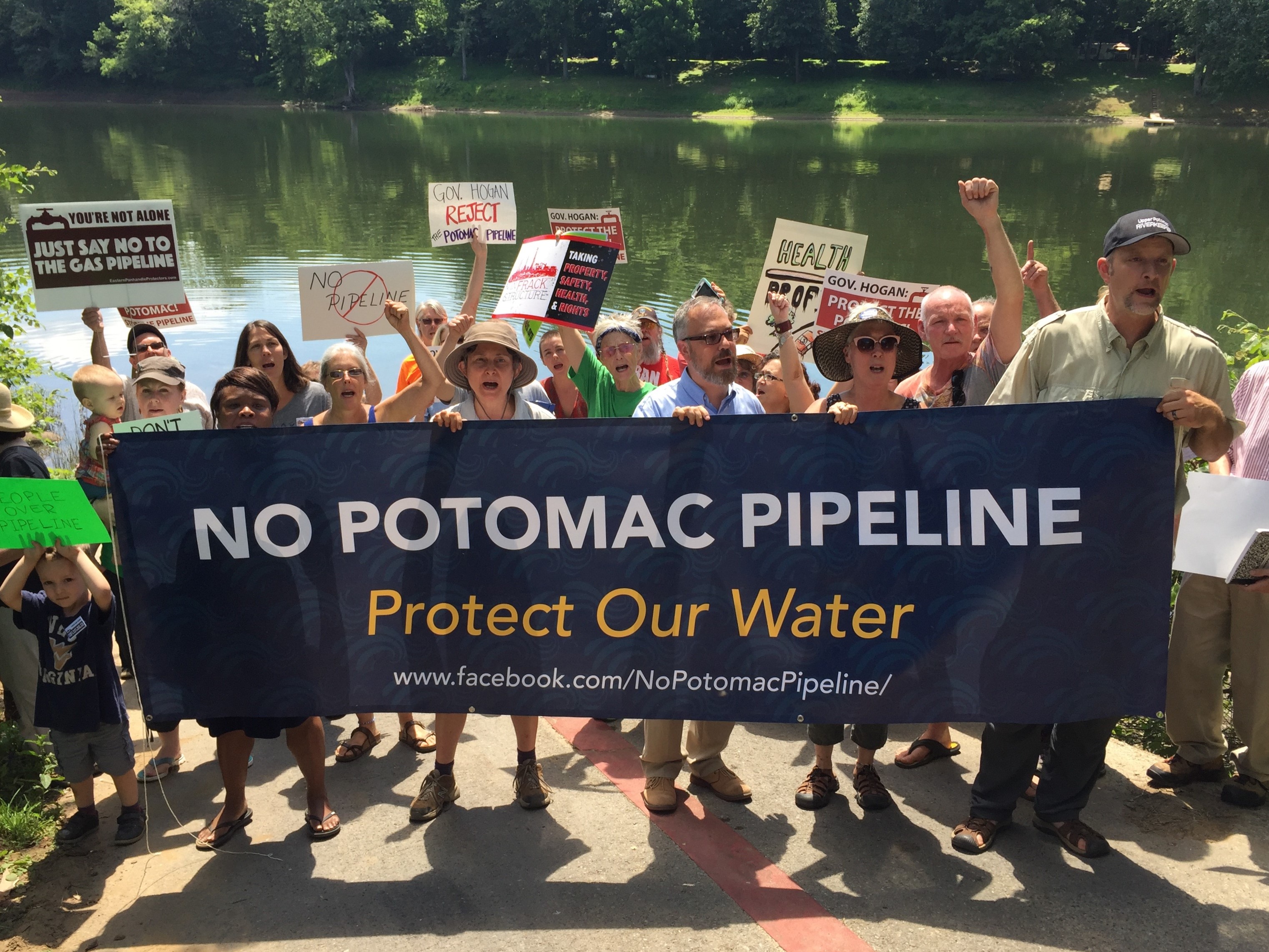

 While the United States solar industry continues to grow, creating sustainable power and job opportunities nationwide, it has a long way to go before it is on par with European countries like
While the United States solar industry continues to grow, creating sustainable power and job opportunities nationwide, it has a long way to go before it is on par with European countries like 